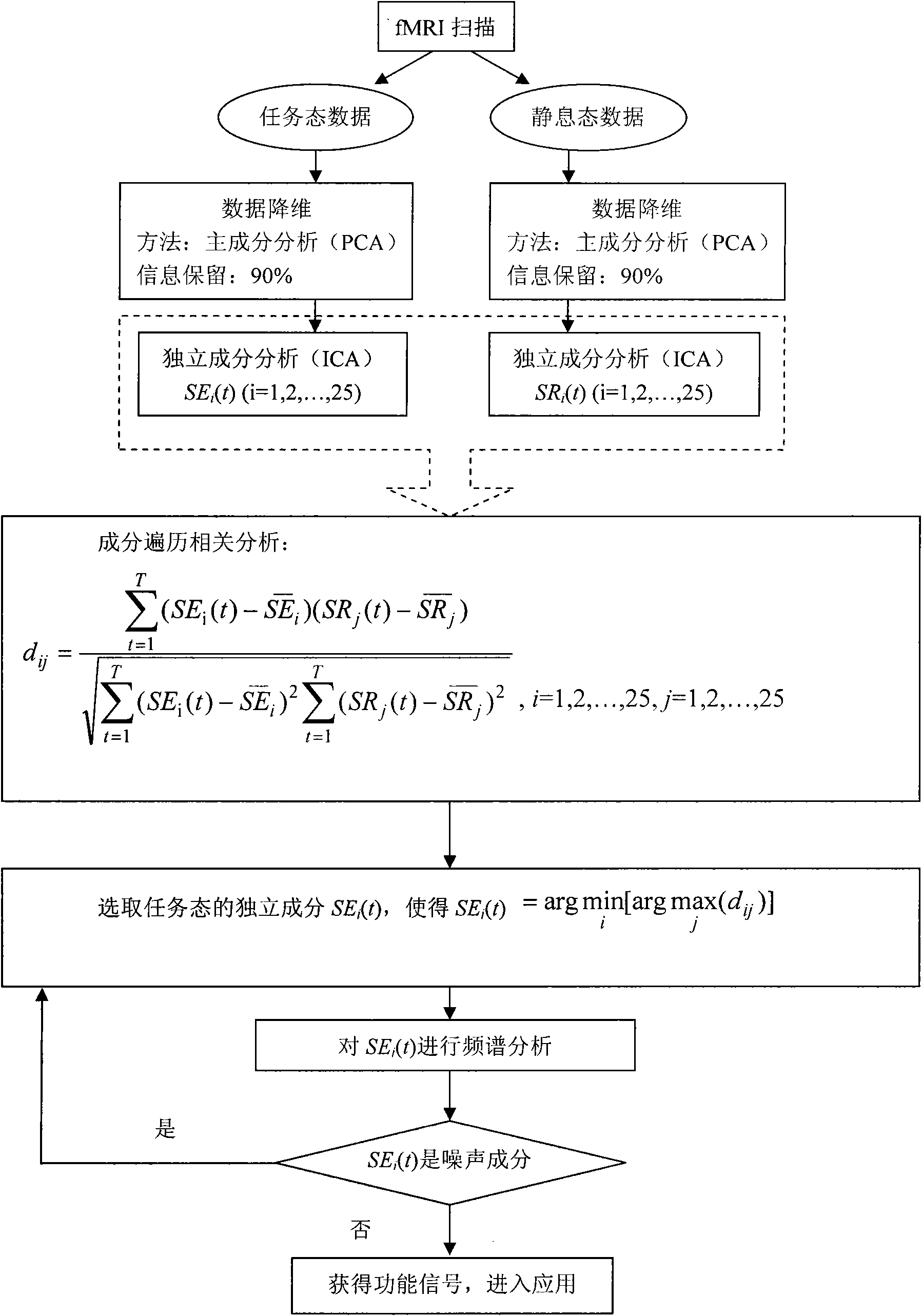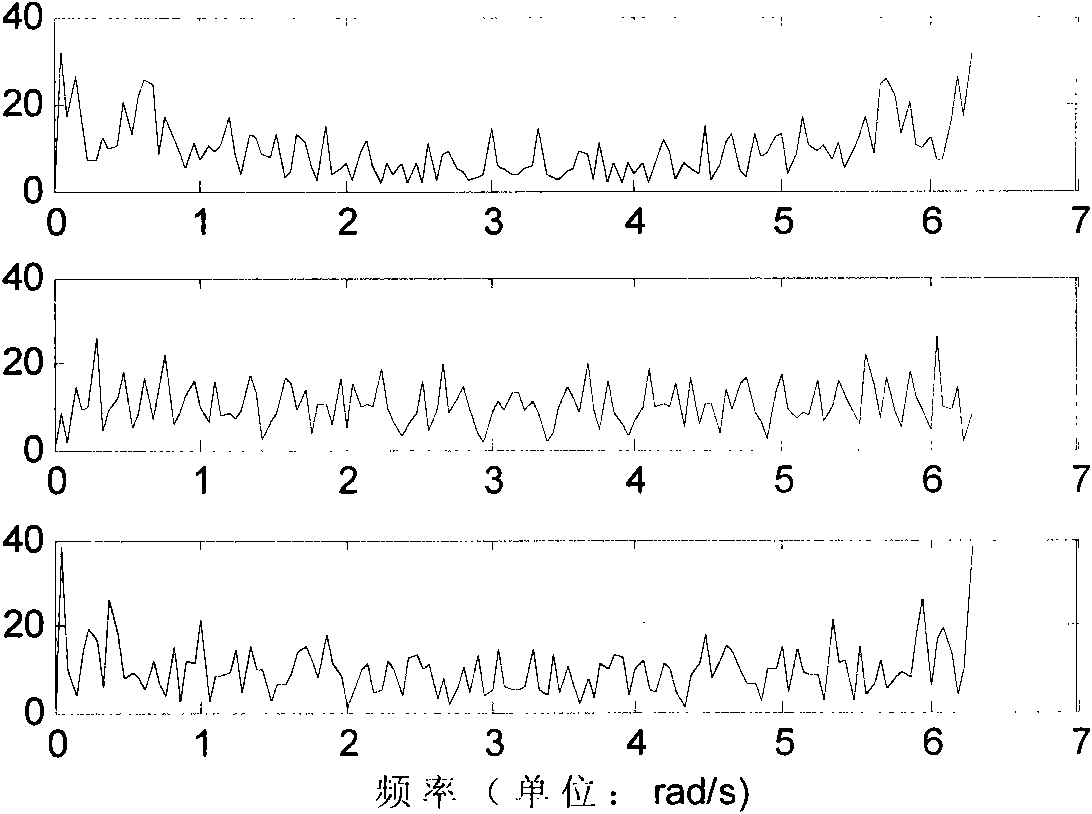Method for recognizing function response signal under function nuclear magnetic resonance scan
A functional nuclear magnetic resonance and response signal technology, which is applied in the direction of using nuclear magnetic resonance spectrum for measurement, magnetic resonance measurement, and measurement using nuclear magnetic resonance imaging system, etc. problem, to achieve the effect of eliminating the influence of noise
- Summary
- Abstract
- Description
- Claims
- Application Information
AI Technical Summary
Problems solved by technology
Method used
Image
Examples
Embodiment Construction
[0028] Under the stimulation of the Chinese Facial Expression Video System (CFEVS), the subjects scanned to obtain task state data, and then scanned to obtain rest state data. The fMRI analysis software SPM was used to preprocess the data spatially and temporally, including head movement correction, spatial normalization, Gaussian smoothing filtering, time normalization and high-pass filtering to remove low-frequency noise, and after operation, the data set was obtained. Use PCA (Tipping M, BishopC.Mixtures of probabilistic principal component analyzers.NeuralComputation, 1999, 11: 443-482) to reduce the dimension of task state data and rest state data, and retain the main information; then use the time domain Independent component analysis (ICA) extracts 25 independent components of each of the two types of data; and then finds out the range of functional signal components by performing correlation traversal between the independent components of the two types of data, and obta...
PUM
 Login to View More
Login to View More Abstract
Description
Claims
Application Information
 Login to View More
Login to View More - R&D
- Intellectual Property
- Life Sciences
- Materials
- Tech Scout
- Unparalleled Data Quality
- Higher Quality Content
- 60% Fewer Hallucinations
Browse by: Latest US Patents, China's latest patents, Technical Efficacy Thesaurus, Application Domain, Technology Topic, Popular Technical Reports.
© 2025 PatSnap. All rights reserved.Legal|Privacy policy|Modern Slavery Act Transparency Statement|Sitemap|About US| Contact US: help@patsnap.com



